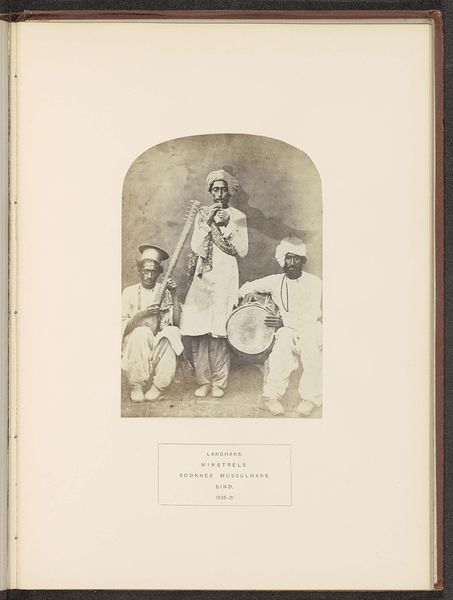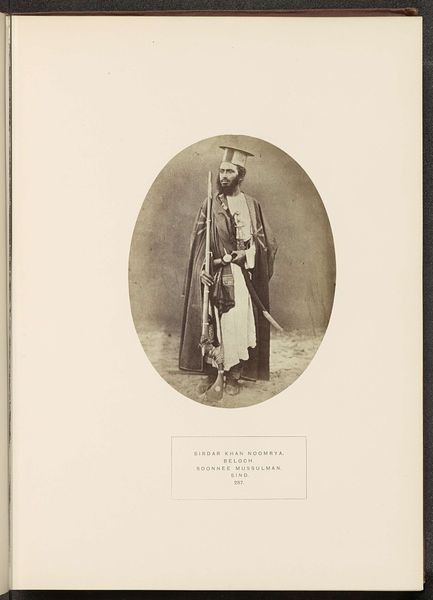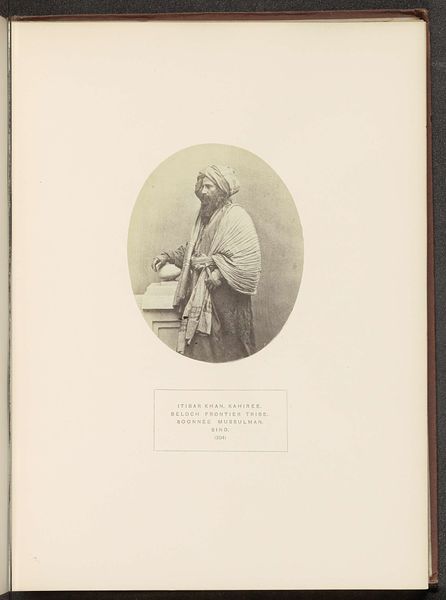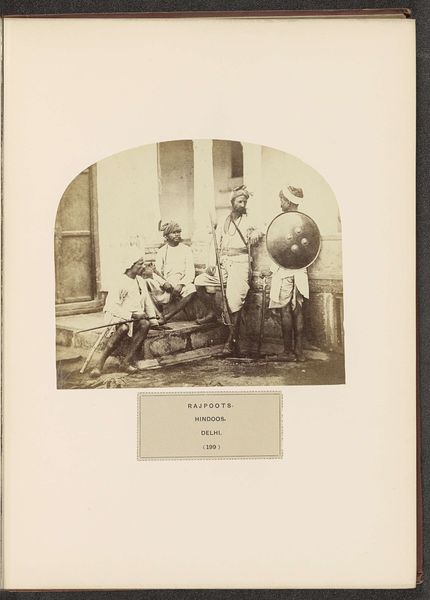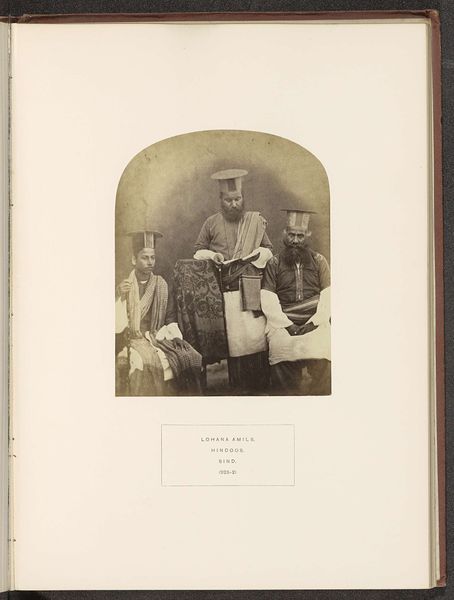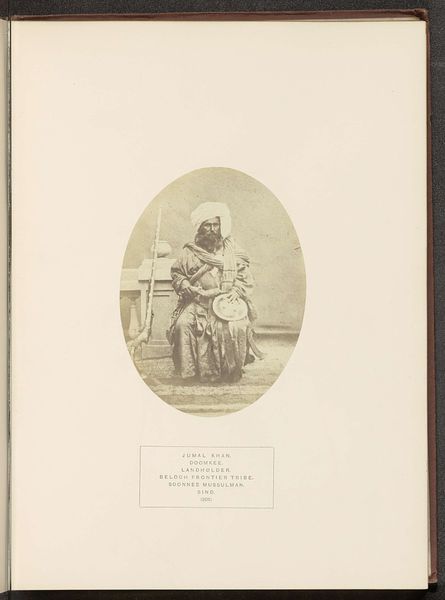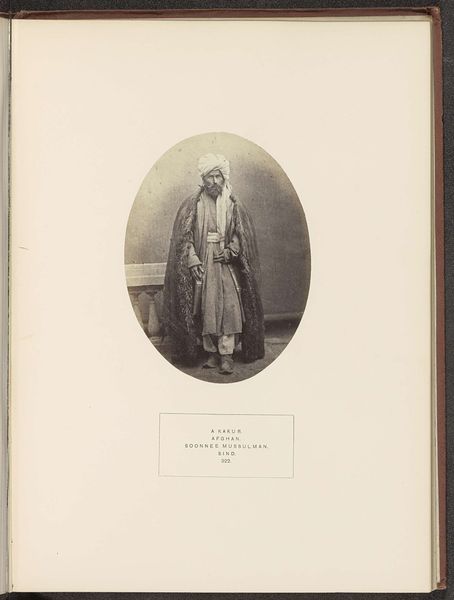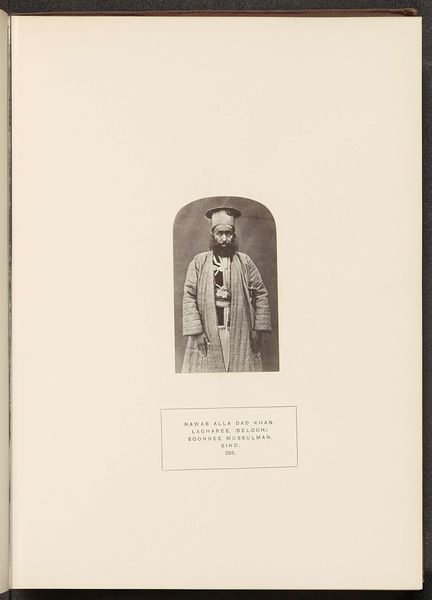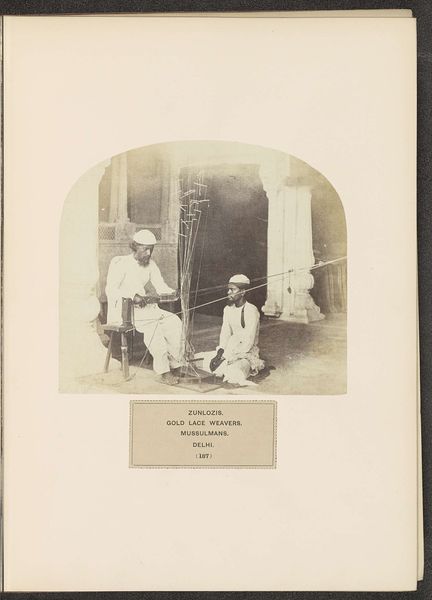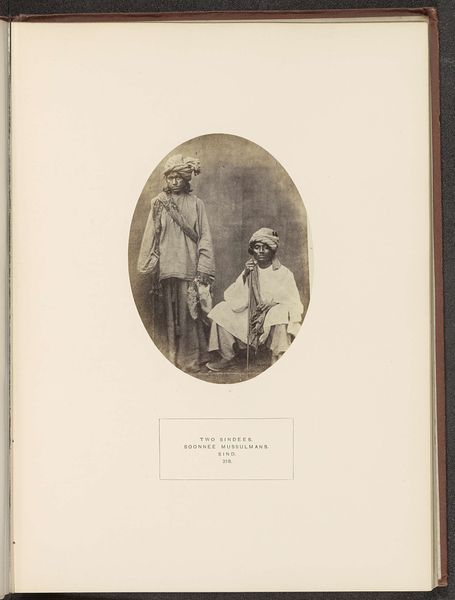
photography
#
portrait
#
photography
#
orientalism
#
genre-painting
#
realism
Dimensions: height 154 mm, width 118 mm
Copyright: Rijks Museum: Open Domain
Henry Charles Baskerville Tanner made this albumen print, titled "Portret van drie minstrelen in Sindh," sometime in the late 19th century. The albumen process involves coating paper with egg white, then using it to capture a photographic negative. This results in a print with a distinctive, slightly glossy surface and fine detail, as we can see in the intricate patterns of the minstrels' clothing and instruments. What strikes me most is how this photographic method, requiring careful preparation and a deep knowledge of chemistry, contrasts with the relative ease of modern digital photography. The labor-intensive nature of albumen printing would have been a significant factor in the economics of image-making at the time, influencing who could afford to commission or purchase photographs. Considering this, Tanner's portrait offers a glimpse into the colonial gaze and the representation of Sindh's culture through a lens shaped by both artistic skill and social context. Recognizing the labor and materials involved enriches our understanding, challenging any separation between art, craft, and the wider world.
Comments
No comments
Be the first to comment and join the conversation on the ultimate creative platform.


